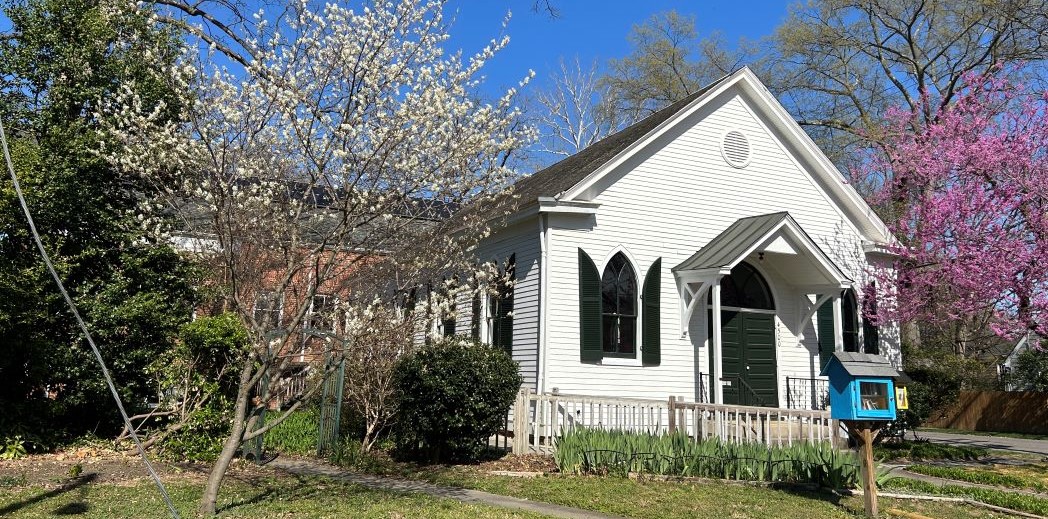Where the Money Went
A Brief Look at Richmond Friends’ Spending
In the Early Years of the Last Century
The responsibility of a treasurer is to keep careful track of the money coming into and going out of an organization. But the legacy of a treasurer also can be a rich historical record of the values and behavior of a group of people. What a society values is what it spends its money on. It’s true of nations, states, and cities. It’s also true of groups like the Religious Society of Friends.
In 4th month 1917, for instance, Richmond Friends’ treasurer Edwin A. Russell recorded a payment of $46.80 to Richmond Dairy Company for “Colored Orphanage Milk Jan, Feb & Mar.” In 5th month he paid for April: $16.80 for 120 quarts of milk. A few months earlier, he had paid $25.00 to the YWCA to support its “Colored work” – probably its Phyllis Wheatley branch. He also sent $50.00 to the American Friends Service Committee.
The Friends Meeting budget from October 1917 through July 1918 was $981.70. Of that amount, $408.15 was carried forward to the following budget. Most of the money went to support social causes, especially needy African Americans. Some of it went to rent the Blue Room of the YMCA where the Friends met: $2.50 a week. But substantially more than half the actual expenditures of the Meeting were to charity and in support of humanitarian causes.
There were few contributions from members: only an occasional sum for some specific project or group like the Board of Foreign Missions. The Meeting had invested funds in loans secured by real estate: either mortgages or what we now might call home equity loans. The interest supported the operating expenditures.
1918 brought the end of World War I. Friends almost immediately began to support various refugee projects, recognizing the enormous ruin that had been done to property, economies, and human lives. Treasurer Katherine Ricks carried on Friends’ support of local social programs. But she also paid $75.00 for Syrian relief in 1st month, 1919. In the next several months, Friends contributed money to help German and Austrian children and “Sufferers in Near East.” The Meeting also placed advertisements in the Times-Dispatch seeking contributions to these causes from the general public. Soon the needy of Russia and Armenia were added to the list.
1918 also was the year in which a virulent strain of influenza struck the United States, killing thousands. The Meeting contributed funds for the “Nurses Settlement during epidemic,” probably a temporary headquarters for nurses trying to contain the virus.
In 6th month 1920, the Meeting contributed $25.00 to the American Union Against Militarism. The organization is still around. Today, it is known as the American Civil Liberties Union, or ACLU.
After 1921, the treasurers’ entries become much less neat and much more sketchy. It’s difficult to know what is happening but the Meeting still paid rent to the YMCA. No expenditures are recorded for milk for the Colored Orphanage or to support the Phyllis Wheatley branch of the YWCA. Nor are there expenditures for international relief.
But on October 31, 1929, the Meeting paid $17,002.45 to the Trustees of the Christian Science Church to purchase a building at the corner of Park and Meadow in Richmond. From that point on, expenditures are recorded for coal, wood, electricity, and water.
Richmond Friends have had a Meeting House ever since, except for a period during World War II when Friends rented worship space at the YMCA and Covenant Presbyterian Church in order to conserve scarce fuel. It is interesting that the Meeting bought a building in 1929 for $17,000 and then bought another, its present Meeting House, for the an almost identical amount in 1957.
The purchase in 1929 came as the nation slipped into the Great Depression. There is little record in the treasurers’ accounts of the great suffering of that time.
But there is one record. On the 8th day of 5th month, 1930, the treasurer noted simply:
“Money given a stranger – $2.50.”
Contributed by Gordon Davies
* * * *
